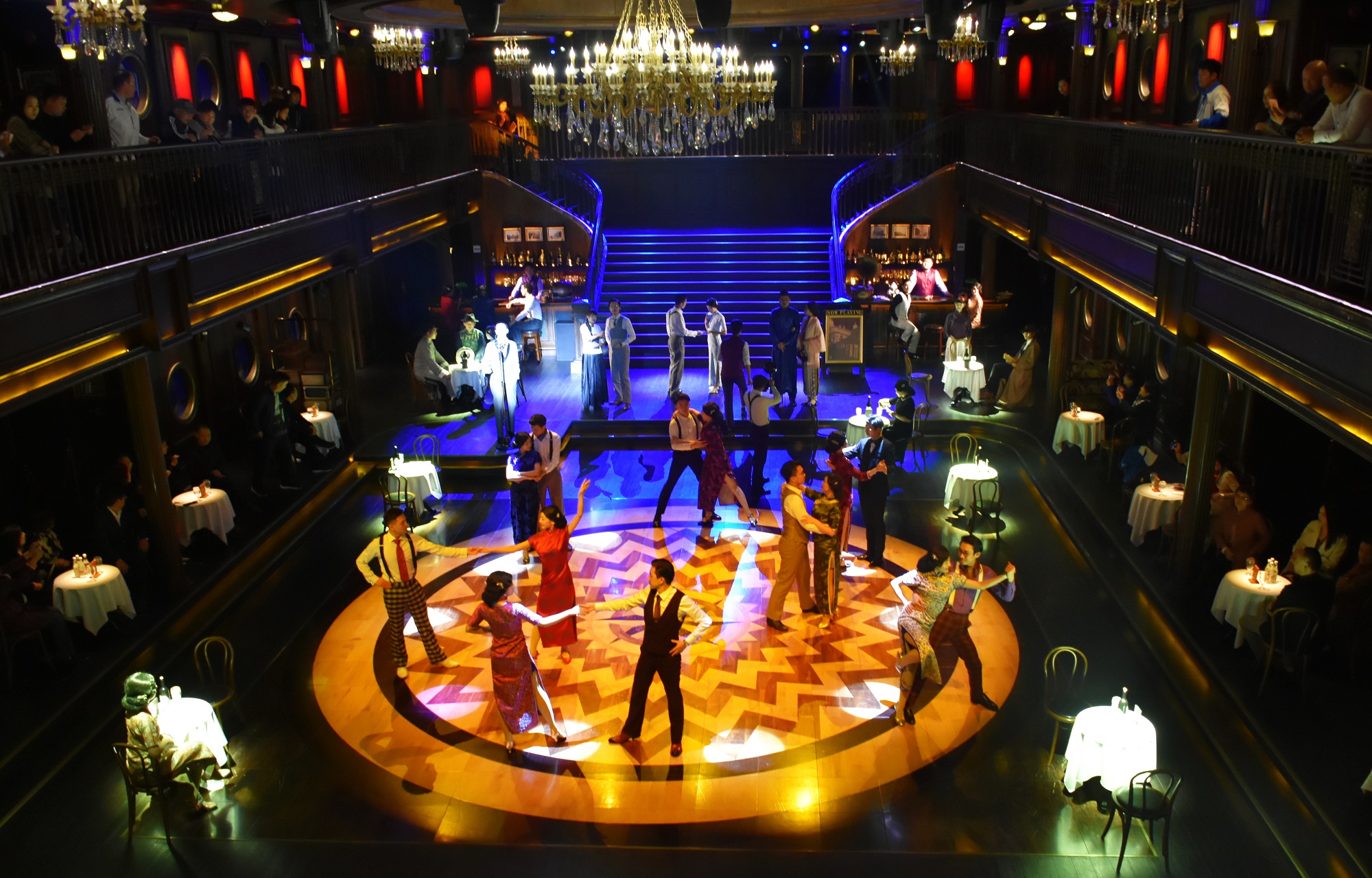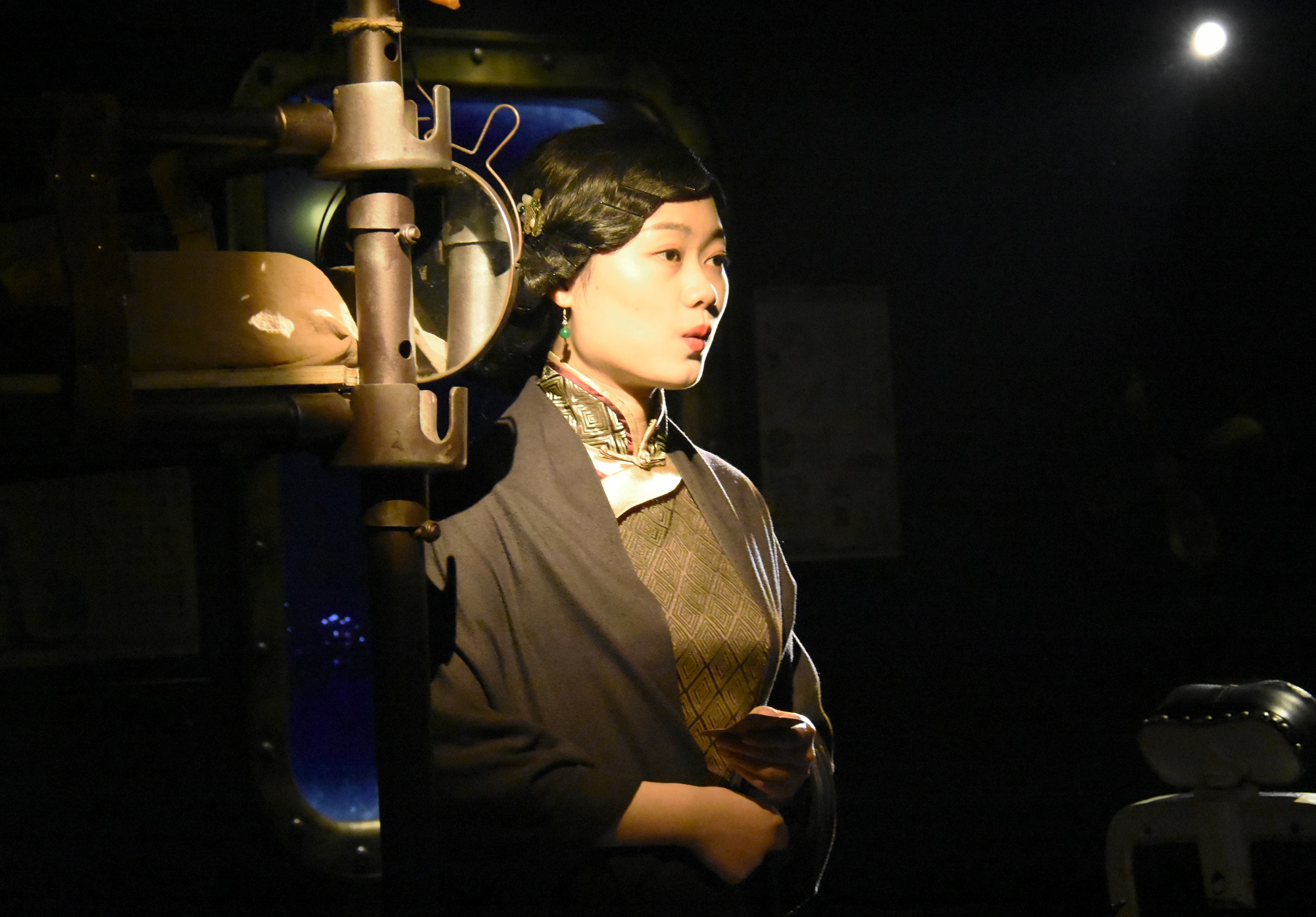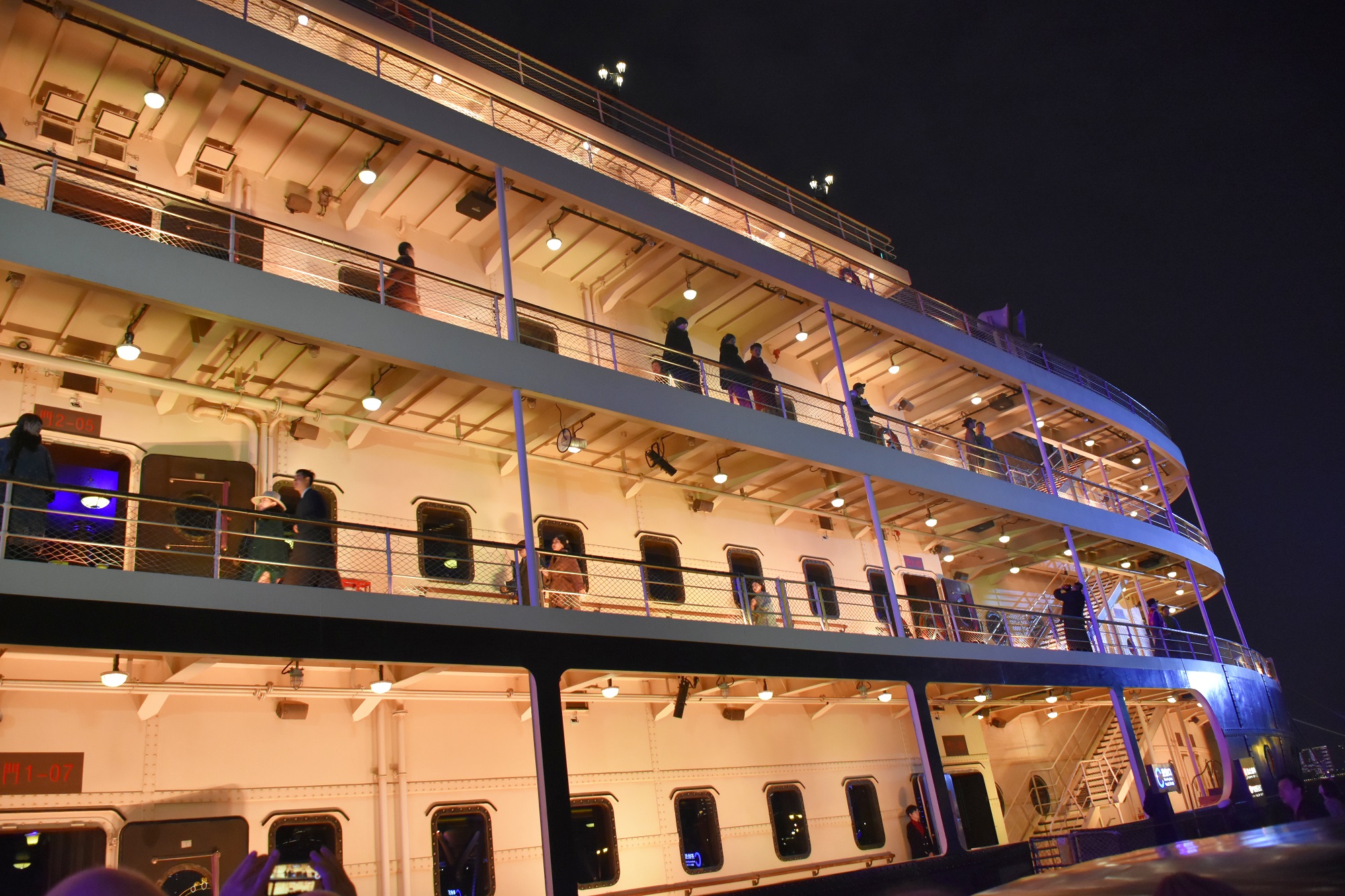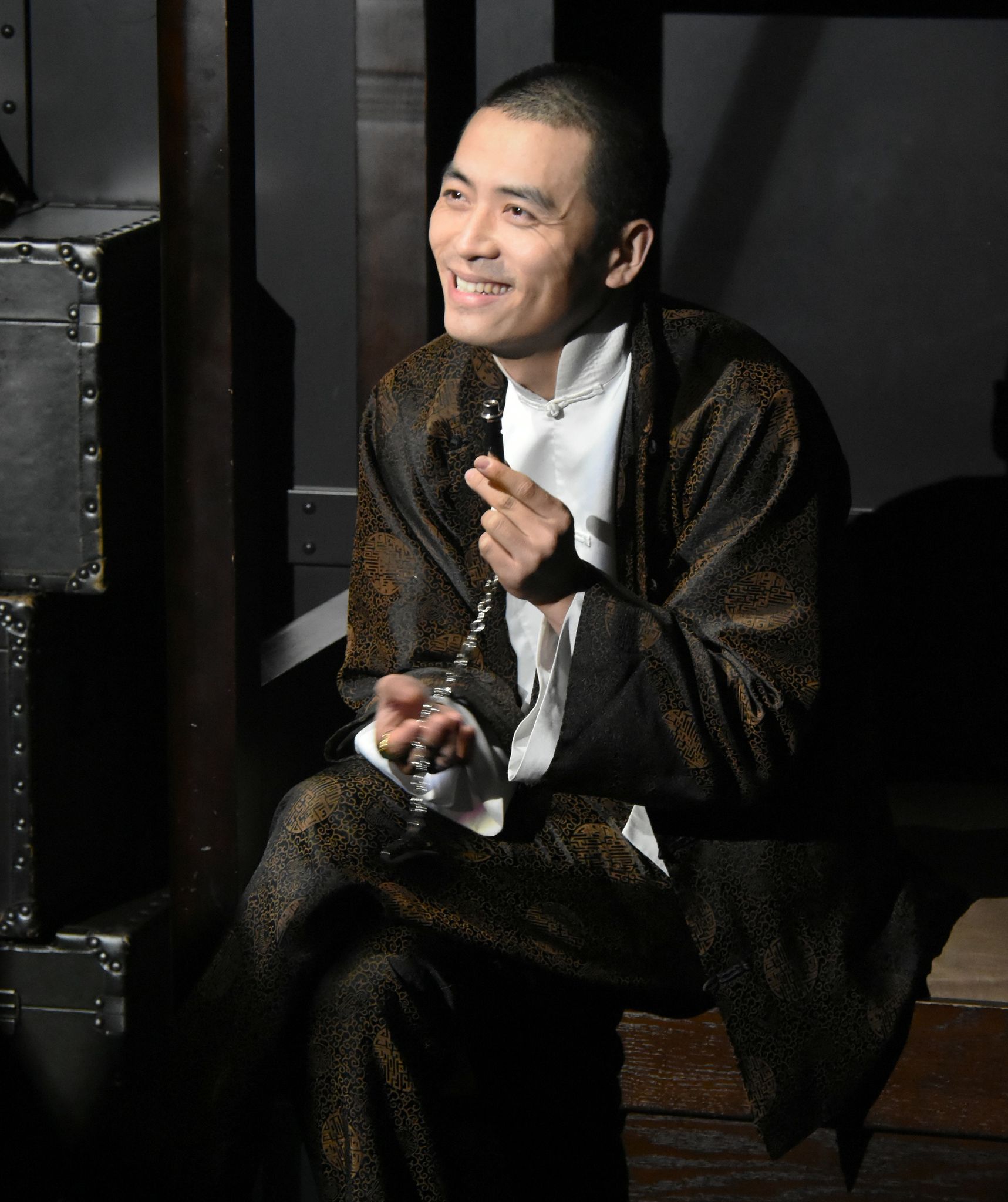All the ship’s a stage: Immersive theatre on Yangtze River turns back time

WUHAN (CHN) - An old woman dressed in the traditional Chinese Hanfu attire sits on a bench on the wharf, her eyes fixed on people bidding their loved ones goodbye from a four-storey ship set to embark on a journey down the Yangtze River. It is two-and-a-half-hours past sundown, and the image of the Second Wuhan Yangtze River Bridge, adorned with thousands of LED lights, is glistening on the pitch-black waters of the Yangtze in the distance.
The old woman is among the hundreds of passengers waiting to get on board the steam ship. This may be her first voyage in your company, but trust her to be familiar with every square inch of the vessel, know every turn in the corridors, or the number of steps on every stairway like the back of her hand. An actor by profession, she is at once a performer in and spectator of the multi-dimensional immersive theatrical production, “Zhi Yin Hao,” that is set to unfold further as the ship, an eponymous purpose-built vessel, unmoors from the Hankou River beach in Wuhan, the capital of the Hubei province in China.
A full-size replica of the Jianghua ship of the Wuhan Minsheng Steamship Company in the early 20th century, Zhi Yin Hao takes its voyagers on a walk down memory lane, re-enacting life as it used to be in Wuhan in the 1920s. Now an important centre for trade, economy, transportation and IT in central China, Wuhan at the time, embodied the uncertainty of a region in transition, seeking to carve its own destiny as one of China’s financial and cultural hubs amid tumultuous shifts of power.

Through an evocative performance blending powerful live and pre-recorded acting and an enlivening mix of western music and ballroom dance styles, including jazz, country, Lindy hop and the rock-and-roll-inspired twist, the 50-plus “Zhi Yin Hao” cast brings to life the struggles and aspirations of people from all strata of Wuhan’s populace in the early 20th century.
The cruise lasts nearly two hours, with much of the play centred on depicting Wuhan’s cosmopolitan ethos of the 1920s that earned the city the epithets, “Eastern Chicago” and “the Chicago of China.”
The ship has four decks and 98 cabins, allowing the performers on board to enact the myriad montages of daily Wuhan life of the bygone era at specific sections on the vessel best suited to depicting the various locales of the city. The audience, all the while, since the moment they set foot on the jetty before the voyage begins to the time the ship docks again at the Hankou beach, interacts with the performers, dancing, singing and soaking in the grandiose of the spectacle delivered entirely in Chinese and executed to perfection by a seasoned troupe of artists.
From the audience’s perspective, a particularly enthralling episode occurs on the third floor of the ship as they enter their designated cabins corresponding to the room numbers marked on their tickets. With three fellow passengers – most or all of them strangers – for room-mates, each guest on board the ship spends about ten minutes in their dimly lit cabins.

As the narration of the play continues to emerge from speakers concealed behind the cabin’s wooden walls and beneath the flooring, the passengers spend their time trying on traditional Chinese attire from the wardrobe or resting on the two beds placed at the ends of the compartment. A number popular Chinese and English 20th-century literature are also stacked on a central writing table for the occupants of the cabin to leaf through.
The play reaches its final act under the starlit Wuhan sky, as the panorama of the city’s skyline comes into sight with a climb to the bejeweled main deck of the ship. A live performance by the in-house orchestra sets the mood for the last leg of the cruise, with the principal actor-conductor taking centre-stage to deliver the vote of the thanks and parting address while raising a toast to the spirit of Wuhan.
By far the biggest surprise for the passengers comes about as the ship languorously glides under the Second Yangtze River Bridge, the architectural splendor of structure binding the beholders in collective awe.
“A magnificent experience that took me back to Wuhan life in the 1920s. That’s what this cruise was, a wonderful journey back in time,” says Shashi Chandra Bahadur Singh, Nepal’s Chief of Delegation from Nepal, who completed his maiden voyage on board the Zhi Yin Hao earlier this week. “I have seen those things in the movies, but this was the first time I’ve seen it live on a cruise. It’s lovely.”

A key project of the Wuhan Tourism Development & Investment Group Co. Ltd., “Zhi Yin Hao” aims to promote regional tourism in the Hubei province during its 13th five-year period. Directed by Fan Yue, the project, according to programme’s official website, fuses the “one version of the multi-edition” theatrical experience with the “Zhi Yin Service Standard,” and is recognised among the provincial government’s prime cultural endeavours.
“The lighting system in Wuhan is amazing,” says Singh, “and this cruise was yet another opportunity to see the bridge, the lights, the Yangtze River in all their glory once again. A few days ago, I was talking to a local at the Athletes Village, who said, ‘Wuhan came 10 years forward because of the CISM Games’. All this development, she feels, would have taken place ten years later, but thanks to the Military World Games, the government has done a great job to launch Wuhan forward in time.”
And what is a better way to witness Wuhan’s leap into the future than with a throwback to its past that comes alive on a ship stage where all men and women are merely players!
(Source: CISM Media and Communication Department - Journalist: Ms. Annesha Gosh - Pictures: Mr. Christian Pierre)


